Physical Address
304 North Cardinal St.
Dorchester Center, MA 02124
Physical Address
304 North Cardinal St.
Dorchester Center, MA 02124
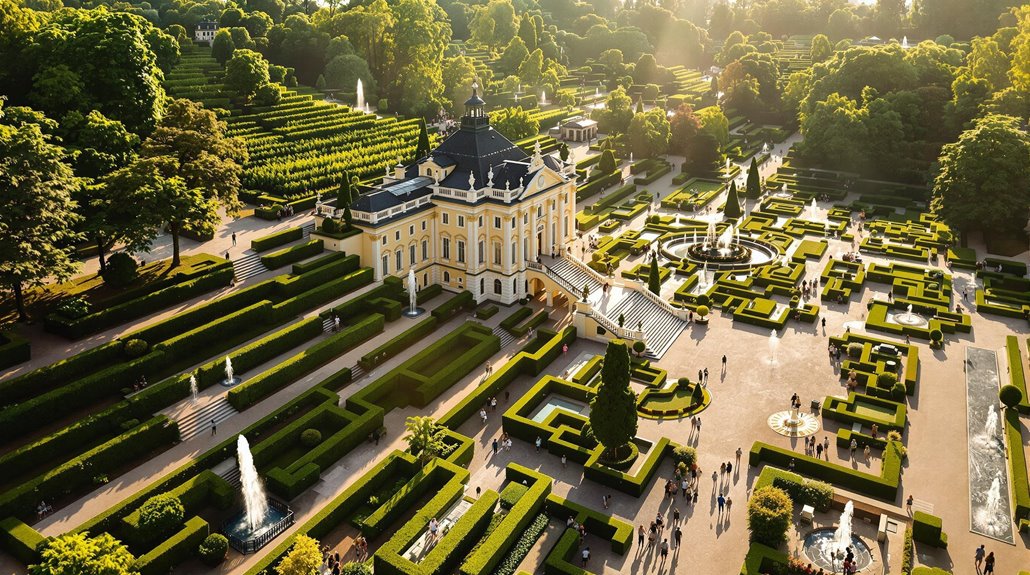
You will discover Berlin's surroundings just as enchanting as the city itself, with each day trip offering a unique slice of German culture and history. Whether you're drawn to royal palaces, ancient forests, or historic memorials, these destinations won't break your budget and can be reached within a few hours. From punting through Spreewald's tranquil waterways to exploring the dramatic sandstone cliffs of Saxon Switzerland, these 12 getaways will transform your Berlin stay into a deeper German adventure.
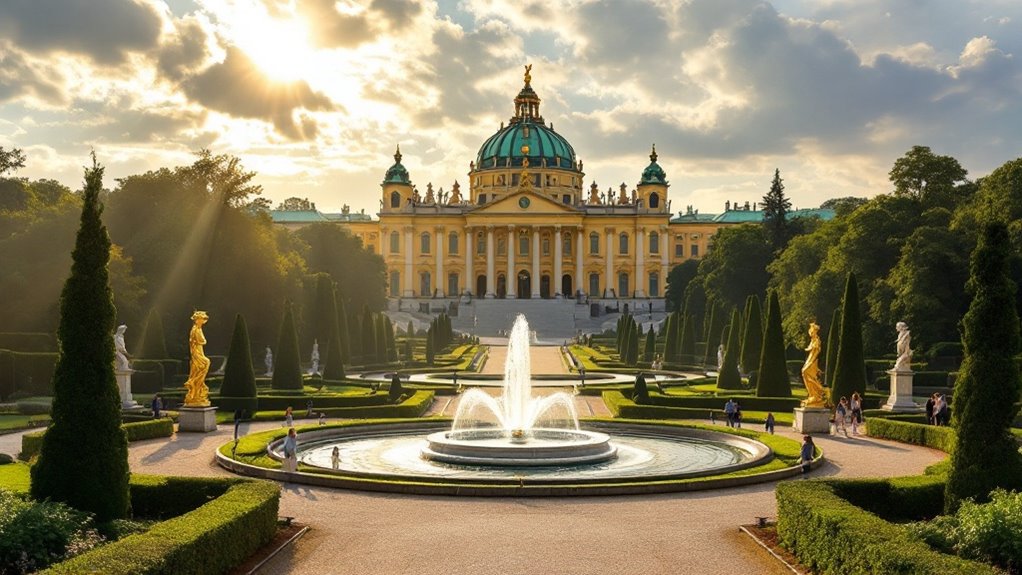
Just 36 kilometers southwest of Berlin lies Sanssouci Palace, Frederick the Great's summer retreat and a masterpiece of Frederician Rococo architecture.
A stunning Rococo palace near Berlin, Sanssouci served as Frederick the Great's elegant summer escape from royal duties.
The palace attracts over two million visitors annually from around the world, showcasing its enduring appeal as a cultural landmark.
You'll need about three hours to explore this UNESCO World Heritage site's ornate interiors and sprawling 290-hectare park.
For €14, you can tour the single-story villa's ten principal rooms, including the striking Marble Hall and Picture Gallery featuring works by Rubens and Caravaggio.
The palace grounds are free to explore, with highlights including terraced vineyards, the Historic Windmill, and the grand New Palace.
Get there via RE1 or S7 trains from Berlin, and consider the sanssouci+ combination ticket (€17+) if you plan to visit multiple palaces.
Visit April through October for blooming gardens and working fountains.
A network of serene waterways awaits you in Spreewald, a UNESCO Biosphere Reserve just an hour southeast of Berlin by train. Take the RE2 or RE7 from Ostkreuz to Lübbenau, using either a Deutschland Ticket or Brandenburg group ticket to save money. A scenic 15-minute walk from the station leads you through charming streets to the waterfront.
The region's 1,575km of waterways offer endless exploration through forested canals and traditional villages.
Visit between May and September for ideal weather, but arrive before 10 AM to avoid summer crowds.
Don't forget insect repellent for those shaded waterways.
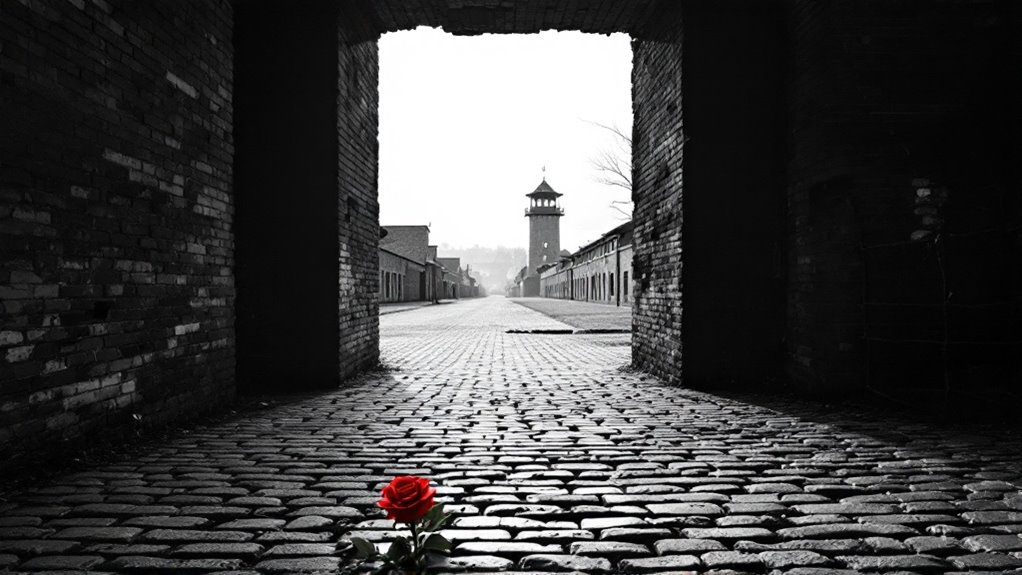
Located 35 kilometers north of Berlin, Sachsenhausen stands as one of Germany's most significant Holocaust memorials, offering essential insights into the darkest period of 20th-century history.
You'll reach the memorial easily by taking a 40-minute train to Oranienburg station, followed by a 20-minute walk. The site, which operated as a Nazi concentration camp from 1936-1945, is now a thorough museum that's free to enter.
Take a guided tour to understand the camp's role as an SS training center and the tragic fate of its 200,000+ prisoners. The camp's distinct isosceles triangle design covered 400 hectares and allowed for centralized control of prisoner movements.
Plan for a full day visit, as the extensive grounds include Tower A, the roll call yard, and Station Z gas chambers.
Remember to wear comfortable shoes, bring water and snacks, and approach the site with appropriate solemnity.
After exploring the somber history of Sachsenhausen, you might yearn for an uplifting outdoor adventure.
Just three hours from Berlin, Saxon Switzerland National Park offers dramatic sandstone formations and over 1,200 km of marked trails. You'll discover everything from family-friendly paths to challenging climbs featuring metal ladders and steps. The park's extensive network ensures suitable hiking options for every skill level and preference.
Getting there's straightforward: take a train to Dresden, then connect via S-Bahn or ferry to trailhead towns like Bad Schandau or Rathen. The park's free entry makes it a budget-friendly escape.
For your visit, consider these popular trails:
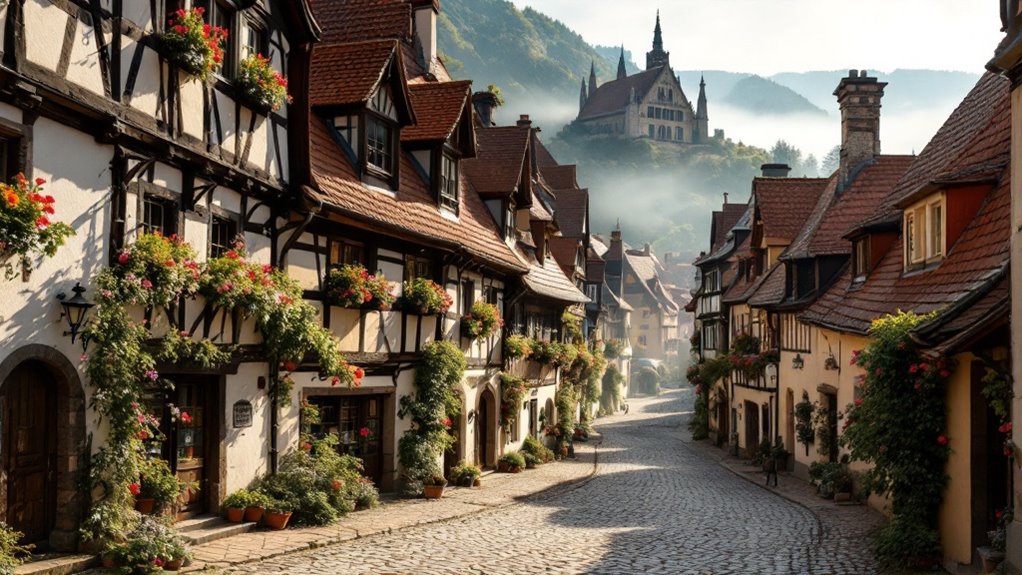
While many German towns claim medieval heritage, Quedlinburg stands in a league of its own with over 2,000 half-timbered houses spanning eight centuries.
You'll step back in time as you explore this UNESCO World Heritage site, where the medieval street layout remains perfectly preserved.
Visit the Collegiate Church of St. Servatius to see 10th-century crypts and royal tombs, then climb Schlossberg hill to explore the Renaissance castle. This historic site marks where Duke Henry I received the German crown in 919, establishing Quedlinburg's significance in imperial history.
Step inside St. Servatius Church's ancient crypts and royal tombs before ascending Schlossberg hill to discover the castle's Renaissance splendor.
Don't miss the Münzenberg district's rare 12th-century timber houses. During Advent, warm up at the Christmas market spread across 20 historic courtyards.
For outdoor enthusiasts, Quedlinburg serves as the perfect starting point for the Selketal-Stieg hiking trail.
You can reach this medieval gem in about 3 hours from Berlin by regional train, making it an ideal day trip destination.
Spanning both Germany and Poland, the magnificent Muskau Park stands as Europe's largest landscaped garden, where you'll discover 830 hectares of meticulously designed grounds straddling the Lusatian Neisse River.
Prince Hermann von Pückler-Muskau's masterpiece blends English-style gardens with local flora, creating a seamless cross-border experience that's easily accessible from Berlin. The park gained prestigious recognition when it was designated as a UNESCO World Heritage Site.
To make the most of your visit:
Don't forget your EU ID for hassle-free border crossing between the German and Polish sections.
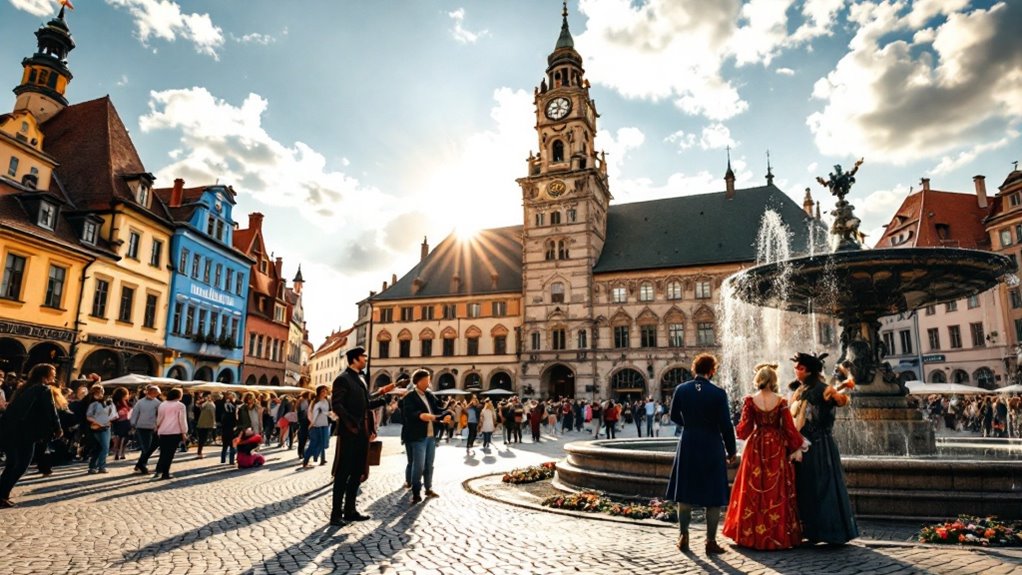
Venture beyond Bad Muskau's gardens to discover Poznań, a lively Polish city that's perfect for an enriching day trip from Berlin.
You can reach this historic gem in under 3 hours by train using the cost-effective Berlin-Brandenburg ticket at €33 for up to five people.
Start at the stunning Old Market Square, where mechanical goats perform at noon atop the Renaissance Town Hall.
At noon, mechanical goats emerge to perform a time-honored ritual at the Renaissance Town Hall overlooking Old Market Square.
Don't miss the Imperial Castle's grand throne room or Cathedral Island, birthplace of Polish statehood. The Cathedral of St. Peter and Paul is Poland's oldest cathedral and features magnificent Gothic architecture.
For lunch, try local specialties like rogal świętomarciński (traditional croissants) at Ratuszova or hearty Polish fare at Wiejskie Jadło, with vegan options available at both restaurants.
Spend your afternoon exploring the National Museum's Polish art collection or wandering through Citadel Park.
Getting around is easy with frequent trams connecting all major sites from the main station.
Just an hour from Berlin by S-Bahn, the Museum Island Barberini stands as Potsdam's premier art destination, housing one of Europe's finest Impressionist collections.
You'll discover over 110 masterpieces, including 39 works by Monet, in this stunning replica of an 18th-century palace. The museum showcases Monet's famous Water Lilies series among its most treasured works.
The museum's barrier-free design guarantees accessibility, with wheelchairs available on-site. As one of Germany's cultural highlights, the museum attracts art enthusiasts from across Europe.
Don't miss the breathtaking Baroque façade, which perfectly complements Potsdam's UNESCO World Heritage surroundings.
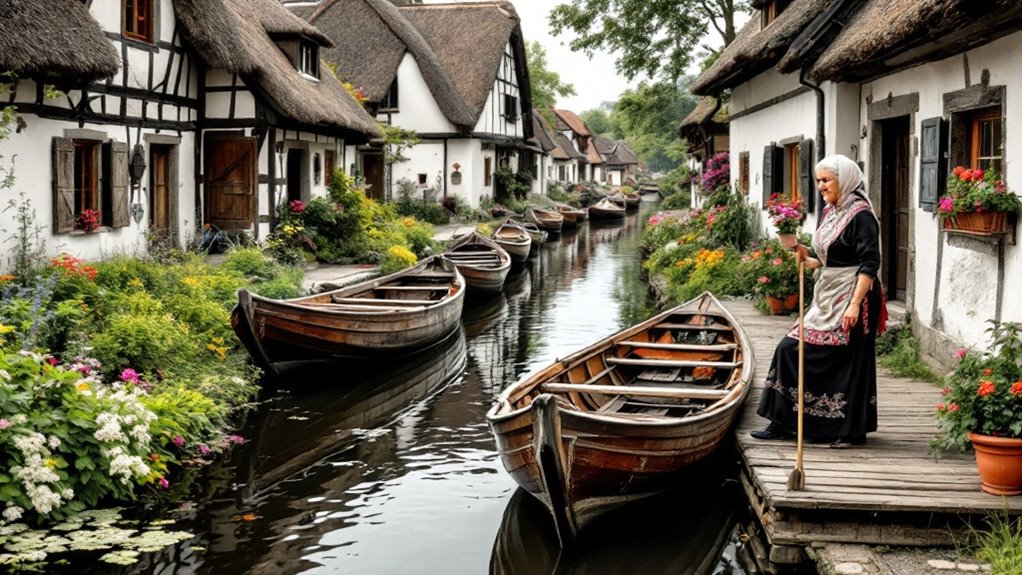
Nestled in the Spreewald Biosphere Reserve, the historic Sorbian village of Lehde offers visitors a rare glimpse into one of Germany's oldest surviving minority cultures.
You'll reach this car-free village via a one-hour train ride from Berlin to Lübbenau, followed by a short walk or traditional punt boat ride.
Navigate the village's waterways by flat-bottomed punt while admiring wooden houses with distinctive reed roofs and snake symbols.
Until 1929, the village was only accessible by boat, making it one of the most isolated communities in the region.
Visit the open-air museum to explore 19th-century farmsteads, watch traditional crafts demonstrations, and sample local specialties like Spreewald gherkins and Sorbian potato pancakes.
Don't miss the Gurkenmeile stalls selling pickles and regional products.
For the best experience, time your visit between April and October, when you can join guided tours and seasonal festivals celebrating Sorbian culture.
From the peaceful waterways of Spreewald, head southeast to discover one of Germany's most impressive military landmarks.
Königstein Fortress, perched atop a 9.5-hectare plateau, showcases over 750 years of military architecture and Saxon history. Originally established by Duke Wenceslaus I in the 10th century, the fortress evolved into an impregnable stronghold.
You'll need about 2-3 hours to explore this unconquered stronghold, which houses Europe's second-deepest well and once contained the world's largest wine barrel.
What you'll experience at Königstein:
The fortress is open year-round, with shorter hours during winter months (November-March).

While many visitors flock to Berlin's nearby attractions, the historic Brocken steam train offers an unforgettable journey through the Harz Mountains.
You'll discover nearly 600 meters aboard a vintage steam locomotive as it winds through spruce forests and granite cliffs to reach Germany's highest northern peak. The scenic route features several historic stations including Schierke at 688m as it climbs toward the summit.
From Berlin, catch a direct HEX train to Wernigerode (2.5-3 hours) or drive there in about the same time.
The steam train journey to the summit takes 50 minutes, with up to 11 daily departures in summer.
Chug along for 50 scenic minutes to the peak, choosing from frequent summer departures aboard this historic mountain railway.
Buy your tickets (€30-40 one-way) in advance through the HSB website, especially during peak season.
At the top, you'll encounter a museum, restaurant, and hiking trails.
Pack light and dress warmly – the summit averages 2°C with fog on most days.
One of Germany's most photographed bridges stands in Kromlau Park, where the Devil's Bridge (Rakotzbrücke) creates a perfect circle when reflected in the still waters below.
You'll discover this architectural marvel just 165km southeast of Berlin, set within a 200-hectare park famous for its azaleas and rhododendrons. Built between 1866 and 1875, the nineteenth-century stone bridge spans nearly 20 meters in length.
While you can't walk across the bridge anymore, it's still worth visiting for stunning photos and the surrounding park's mystical atmosphere.
You will discover these 12 day trips from Berlin offer incredible value for your time and money. Most destinations are accessible by regional trains with affordable group tickets, and many sites offer combo passes or free admission days. Pack a picnic lunch, wear comfortable shoes, and download offline maps to maximize your budget. Whether you're into history, nature, or culture, there's a perfect day trip waiting for you.